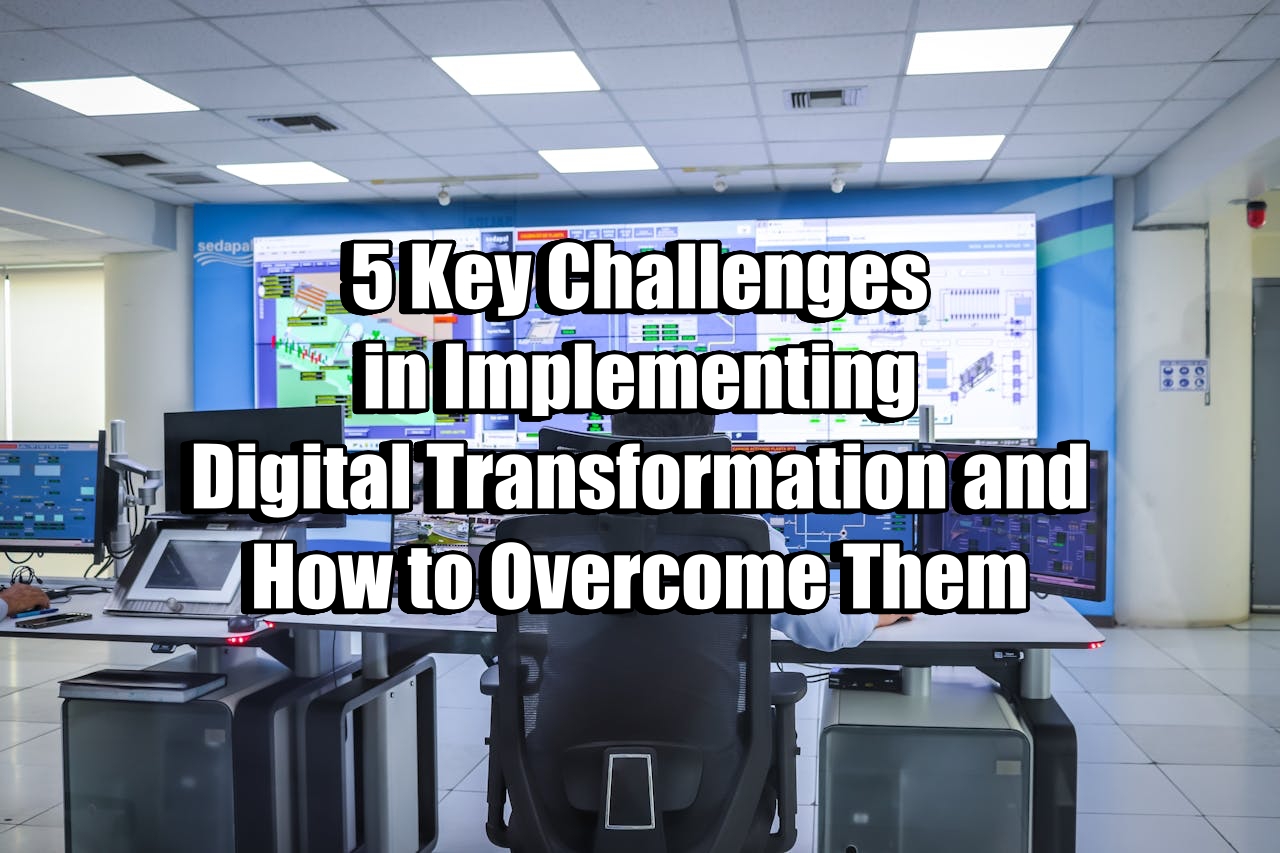5 Key Challenges in Implementing Digital Transformation and How to Overcome Them
Digital transformation is more than a buzzword—it’s a necessity for organizations aiming to remain competitive, agile, and relevant in the modern economy. But while the rewards can be significant, the journey toward digital maturity is rarely smooth. Here are five key challenges businesses face when implementing digital transformation—and practical strategies to overcome them.
1. Lack of Clear Strategy and Vision
The Challenge:
Many companies begin their digital transformation efforts without a clear roadmap. Without defined goals, initiatives may become disjointed, wasting time and resources.
Solution:
Start with a well-defined digital transformation strategy aligned with your business objectives. This includes setting measurable goals, identifying key technologies, and ensuring executive sponsorship. Engage stakeholders early to ensure alignment across departments.
2. Resistance to Change
The Challenge:
Digital transformation often requires changes to workflows, roles, and mindsets. Employees may resist new systems or fear job loss due to automation.
Solution:
Invest in change management. Communicate transparently about the purpose and benefits of the transformation. Offer training programs and support systems to help employees adapt, and involve them in the transformation process to foster ownership and acceptance.
3. Legacy Systems and Outdated Infrastructure
The Challenge:
Many organizations are built on outdated systems that are incompatible with modern digital solutions. These legacy systems can slow innovation and limit scalability.
Solution:
Conduct a thorough technology audit and prioritize system upgrades or integrations that offer the most value. Consider using APIs or middleware to connect legacy systems with new platforms during the transition. A phased migration approach can minimize disruption.
4. Data Management and Integration
The Challenge:
Data silos, poor data quality, and inconsistent formats make it difficult to leverage data effectively across the organization.
Solution:
Develop a comprehensive data governance framework. Focus on centralizing data storage, standardizing formats, and ensuring data quality. Use modern tools like cloud data warehouses and integration platforms to unify disparate data sources and enable real-time insights.
5. Talent Gaps and Skills Shortages
The Challenge:
Digital transformation requires a workforce skilled in technologies like AI, cloud computing, cybersecurity, and data analytics—skills that may be scarce or underdeveloped in-house.
Solution:
Adopt a dual approach: reskill existing employees through training and certifications, and recruit new talent strategically. Partnerships with educational institutions and digital upskilling platforms can help close the skills gap more efficiently.
Final Thoughts
Digital transformation is not a one-time project—it’s an ongoing journey. While the road is filled with challenges, organizations that take a strategic, people-first, and data-driven approach are better equipped to succeed. By anticipating these obstacles and responding proactively, your business can not only survive in the digital age but thrive.


No responses yet